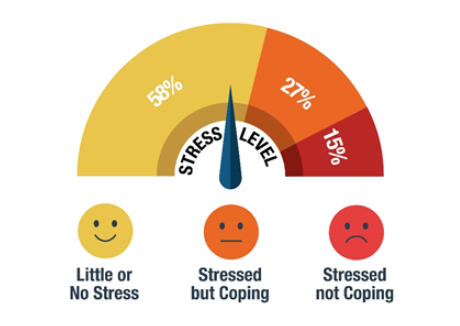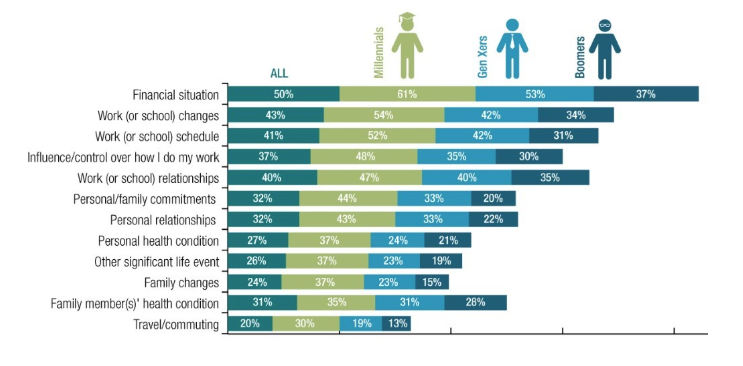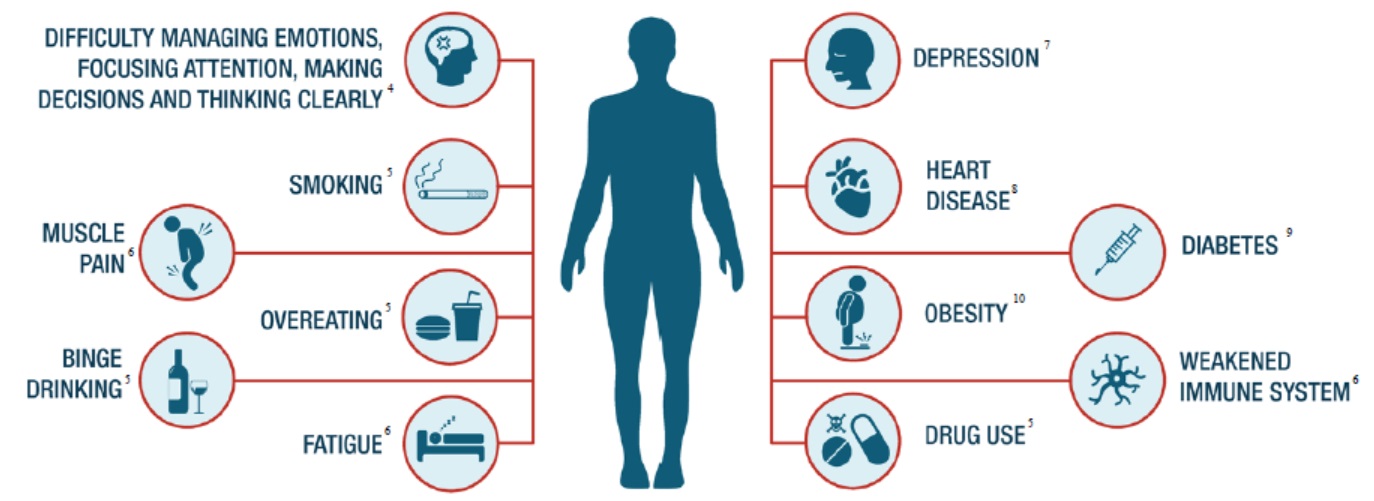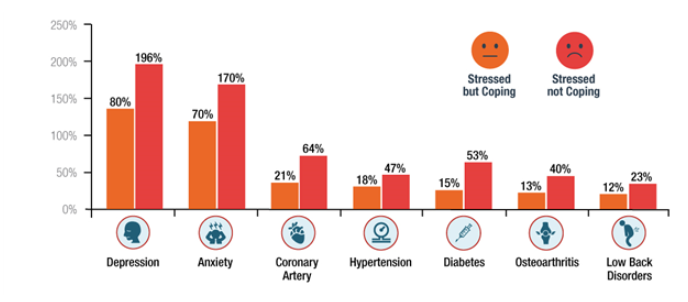January 09, 2020
Employers have long been aware of the disabling aspects of workplace stress and have made its management a priority, offering programs and resources to help stressed-out employees. For employers interested in refreshing their programs – and taking a more proactive approach to tackling stress – this slide deck offers recommendations on creating a comprehensive, proactive strategy based on the most current evidence.
Prevalence and Sources of Stress
A study by Truven Health found that 42% of employees are stressed. Among those, 27% say that they’re coping, 15% say that they’re not.1


The top source of stress for employees of all generations is their financial situation. Other major sources of stress include work-related attributes.2
Employee Stress: Friend or Foe?
- Short-term stress. A stress response that is activated for minutes to hours – can have beneficial effects, such as enhanced immune functioning and increased performance. Most healthy people can deal with short-term stress as long as there are sufficiently long periods of rest (i.e. a time when no biological stress response is activated).3
- Long-term stress – a stress response that is activated for months to years – can have a number of negative health effects because of the body’s inability to return to a resting state. In addition to the negative health effects, long-term stress can decrease employee productivity and performance, and even lead to turnover.3
What is Stress Response?
The hormonal changes that prepare someone to achieve a perceived demand or threat, including:
- Increased heart rate and respiration
- Increase blood glucose levels
- Changes in the digestive process
The Negative Effects of Stress

Stressed Employees are More Likely to Have Other Serious Health Conditions
A study by Truven Health found that employees who are stressed and are not coping are far more likely to have other serious conditions than those with little or no stress. For example, employees who identified themselves as stressed, not coping, were almost 200% more likely to be diagnosed with depression than those who identified as having little or no stress.1

The Costs of Chronic Stress
High stress increases the utilization and costs of health care. For example, employees who identified themselves as stressed, not coping had 53% more emergency room (ER) visits than those with little or no stress.1
Specific employer examples include:
- Company A: Stress was the most costly modifiable risk factor in its population – surpassing 10 other risk categories, including body weight and tobacco.11
- Company B (manufacturing): A 1% point reduction in the prevalence of stress in its population translated to $1.83 saved per capita annually in medical costs.12
More Topics
Articles & Guides
This content is for members only. Already a member?
Login
![]()
